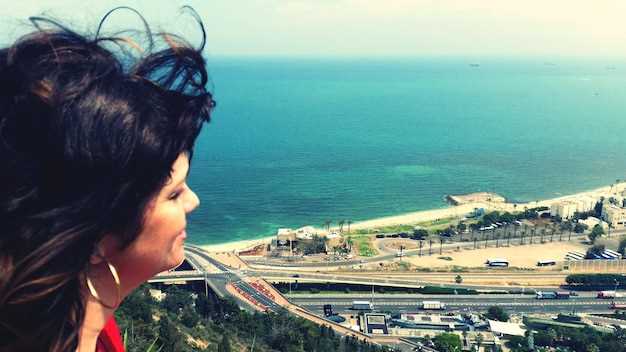
Start with a sunrise in Alfama and ride tram 28 to Baixa, a clear way to begin your Lisbon trip. It starts with a track of narrow stairways and distant fado drifting from open doors. If you meet a local like marta, she’ll tell you where to sample a pastry and pick up a box of chocolates from a small shop before crowds arrive earlier in the morning. This first move sets the pace: eat, stroll, and plan the next activity for a confident start.
On your first full day, wander the Alfama lanes and climb to Castelo de S. Jorge for a sweeping river view. The rooftops, the azulejo accents, and the distant bells anchor your sense of place. In the afternoon, drift through Chiado toward Bairro Alto, catching fado rooms with open doors and catching an underrated sunset above the red tile roofs. That area drew crowds earlier; some were locals. there’s a limited number of shops and restaurants to savor authentic meals. If you’ve been to Lisbon before, you’ll notice how some streets keep their pulse even as new spots pop up. theres no need to rush; this pace makes your first day feel earned, not rushed.
Day two takes you west to Belém for Jerónimos Monastery and the famous pastries, then a riverside walk where you can sample a few bites. If you want a quiet escape, book a half-day trip to Arrábida to admire limestone cliffs, olive groves, and the blue sea–arrábida landscapes that feel miles from the city. Plan a lunch at a limited number of seafood restaurants near the marina, and stop by a couple of chocolate shops for a sweet finish. In the evening, listen to a fado performance and enjoy a calm pace that suits day two.
On day three, dedicate the morning to a compact food crawl through Baixa and Chiado: strong espresso, a flaky pastry, and a quick chocolate treat from a local shop. Then climb to the Santa Justa lift platform for a city view, and finish at LX Factory where restaurants and independent shops spill onto the street. If a final fado note calls, choose a venue with live guitar and a warm crowd. This day caps your trio with a blend of taste, view, and energy. For the last night, seek a rooftop bar with a view to toast the memories.
Three-Day Lisbon Itinerary Focus: Mouraria, History, and Taste

Begin with Mouraria loop at dawn: walk from Martim Moniz to mural-studded lanes, hear Fado from a tiny casa, and choose a fresh pasteis snack before the crowds gather. Take in the scenes of azulejo tiles and winding stairs that carry historical memory, then map a compact setup for the day ahead, thanks to local tips from residents.
-
Day 1 – Mouraria immersion and historical core
- Stroll Mouraria’s alleys to see murals and small chapels; note archaeological traces in old walls and the convent-tinged corners that hint at centuries of urban life.
- Stop for pasteis and snacks at a family-run tasca; this 8-minute loop pairs light bites with views over the Alfama hills.
- Evening: hear Fado in an intimate venue; take in night scenes from an outside overlook, then board a bus back to the hotel.
-
Day 2 – Historical layers and edible traditions
- Morning focus on national history through a compact museum or site that contains a blend of archaeological finds and daily-life details.
- Afternoon choose from options: visit a convent-turned-cultural center for context, or join a tasting session at a nearby quinta showcasing regional snacks and pasteis–fresh and seasonal.
- Evening stroll along lit streets, savoring a dish that highlights local ingredients and national flavors.
-
Day 3 – Sintra day: nature, palaces, and last tastes
- Board an early train to Sintra; the journey offers scenic views through hills and nature; plan a stop at a quinta for a guided tour and tasting if you like.
- In Sintra, allocate time for outdoor exploration and a few archaeological mentions around the palaces; a short 8-minute walk between viewpoints keeps the pace comfortable.
- Board the return to Lisbon for a final round of pasteis and fresh snacks; night options around the national backdrop provide a memorable ending, and take one last photo to save memories.
Getting to Mouraria: best routes from Lisbon Airport and major stations

Taxi from Lisbon Airport is the simplest choice thats flexible and lands you in Mouraria in about 20-25 minutes. You’ll arrive near Rua da Mouraria or the Martim Moniz area, then a short walking stretch brings you to your stay. Typical fares hover around 18-25 EUR depending on traffic, so you can plan dinner right away and start your stay without delay.
If you prefer public transport, these options minimize hops and keep you moving smoothly through downtown:
- From the airport – Metro + tram: Board the airport metro to a central hub, then hop on the iconic tram 28 toward Campo de Ourique. You’ll get off near Graça or Martim Moniz and walk 5-10 minutes to Mouraria. This route contains tiles and murals that highlight the city’s vibe and lets you admire these things as you approach your door.
- From the airport – Metro-only backup: Take the metro to Baixa-Chiado and walk down toward Mouraria. It’s usually a longer walk, but you would gain time if you’re heavy with luggage and want to keep your pace flexible.
- From the airport – Bus + walk: City buses connect to Restauradores or Rossio; alight and continue on foot for a 12-15 minute stroll into Mouraria. Choose this if you want a lower-cost option before your first four-hour in the area.
From major stations to Mouraria, these simple paths usually work well:
- Santa Apolónia: A 15-20 minute walk north through downtown to Mouraria, or a quick ride to Martim Moniz by tram and a 5-7 minute walk thereafter. This lets you select a comfortable dinner before your stay, and you can sample seafood like clams along the way.
- Rossio: A 10-12 minute walk via Rua Augusta into the heart of Mouraria, or a short tram ride down to Graça followed by a 7-9 minute stroll. The route starts with winding streets you’ll already know from postcards.
- Cais do Sodré: About a 12-15 minute walk up to Largo do Carmo and into Mouraria, or take tram 28 for a few stops and then walk 10 minutes. You’ll pass by azulejos that visually frame your arrival and set the title of your Lisboa visit.
- Oriente: Take a quick train to a central stop (Rossio or Cais do Sodré) and finish with a 15-20 minute walk or a short tram ride into Mouraria. If you’re curious about the city’s tiles, this route gives you a calm start before a lively evening.
Tips to smooth the start: download an offline map, note a sample address near Mouraria, and keep a flexible plan for the first hours. If you arrive late, aim for a leisurely stroll that lets you drink in the murals and clams you’ll find along narrow lanes. Four-hour margins work well for customs, baggage, and a gentle warm-up walk, then you can begin your dinner plans with confidence.
Morning in Mouraria: where to start, key streets, and photo spots
Begin at a private bakery on Mouraria’s edge and grab a strong espresso with a warm bread roll. theres a tiny counter where locals swap tips; order a pastel de nata while it’s fresh. This morning bite fuels the walk, especially as light hits azulejo walls and narrow lanes. The idea behind this title is a simple, tasty start you can repeat on other mornings, and theres no rush.
Follow Rua da Mouraria into the heart of the quarter, then drift into a handful of side streets where the citys character shows itself. There are entries into these lanes from multiple angles, so you can loop back if a corner looks better. For a quick bite, a nearby stall offers seafood skewers and a light sauce to dip bread in–perfect for foodies. Portugal is a country where a calm morning can spark big adventures, and if you want a deeper dive, getyourguide offers private options plus discounts on some entries. Think of it as a plus to your own pace, with extra flexibility.
Photo spots to lock in: spot 1, a sunlit azulejo doorway at a corner where laundry hangs; spot 2, a narrow stair with a mural that climbs toward a distant hillside; spot 3, a small overlook from a terrace behind a church that looks over the river and sailing boats. These picks deliver a handful of images you’ll treasure and help you order your shots around the best light. The route is highly photogenic, contains varied textures–from bread counters to mural art–and offers foodies great textures to capture when you pause for snacks.
Plus, if you’re planning more than Mouraria, sintra is a quick train ride away; you can visit palaces, forests, and moody gardens as a day trip. Theres a handy map you can carry; entries to viewpoints, and local bakeries often offer small discounts if you buy coffee or pastry together. This should feel natural: start with the bread-and-coffee, follow the lanes, snap the photos, and note how the light changes to keep the mood fresh all morning.
Secret Food Tours in Mouraria: what’s included, tasting lineup, and booking tips
Book the Mouraria Secret Food Tour and unlock Lisbon’s real flavors with a cozy, immersive stroll through narrow streets and hidden courtyards. The tour keeps group sizes limited for a personal, memorable experience, making it ideal for visitors who stay in town and want to go beyond standard dining.
What’s included: a guided walk led by guides who grew up in Mouraria, access to small family-run eateries, 4–6 tasting stops, and a chance to hear stories from the cooks while you watch them craft dishes in intimate kitchens. You’ll receive maps and a clear location overview so you can retrace the route later, and you can pay with card at the end of the session if needed. The route runs through safe, walkable streets with rest breaks built in so you can pace yourself down and enjoy every moment.
Tasting lineup: pasteis with a creamy center, a spinach-based dish, a pork specialty, olives and cheese with bread, and a sweet finish that showcases local ingredients. Expect short pours of a local wine or beer and non-alcohol options for those who prefer not to drink. The dishes reflect Mouraria’s deep, intercultural roots, served in cozy spots where family recipes are handed down through generations; you’ll feel the deep history in every bite and find plenty of photography moments along the way.
Booking tips: book ahead online, especially during peak season, to secure your spot. Check the meeting point on the location page and arrive 5–10 minutes early. Wear comfortable shoes for uneven streets and bring a small bottle of water; if you’re traveling with kids or a group, ask about family-friendly options and pace. After the last stop, take a moment to photograph the walls and tiles there and plan a short stroll to a quinta or a nearby dining quarter to continue the night in style. You’ll leave with maps, a sense of the town, and a new appreciation for Lisbon’s food culture.
Afternoon and Evening: pairing Mouraria with Alfama or Baixa, transit tips
Pair Mouraria with Alfama by a simple evening loop: start with a 20–25 minute stroll through Mouraria’s colorful lanes, then descend toward Alfama for riverfront views at sunset and a few tales from the hilltop overlooks. If you prefer Baixa, cut across to the central avenues and end with a relaxed walk along the riverfront to Praca do Comércio. This keeps the pace manageable and lets you receive a range of impressions before dinner.
Transit tips: For Alfama, walk from Mouraria toward Graça and take in the stairways, or use a Segway parked near a station to ease the climb between neighborhoods. To reach Baixa, head to the river via a flat, shaded path, or take a short tram ride and finish with a stroll through Rua Augusta. In the evening, weather can shift crowds; plan to arrive early if you want a seat at a popular tavern. Also, know that a quick metro link from Baixa-Chiado can shorten the return if you’re tired after a long day.
Delicacy and learning: In Alfama or Baixa, sample a seafood delicacy such as grilled sardines or bacalhau, ideally along the riverfront. Mouraria’s murals and everyday chatter provide unusual storytelling that eduardo can highlight, helping you learn the neighborhood’s roots without rushing visits. The learning moment comes from small details–tiles, doors, and signs–that reveal how the bairro shaped these streets. Use the last hours to soak in sights and leave room for spontaneous conversations with locals.
Practical notes: The station hub around Martim Moniz offers quick updates and map options, so you receive clear directions for a compact loop. If you want to linger, a longer stroll along the riverfront left of Alfama adds a peaceful ending; otherwise, a shorter plan keeps you from feeling overwhelmed. The weather and points of interest shift as the light fades, so a flexible plan helps you enjoy the neighborhood without rush.
| Option | Route / Transit | Typical Time | Tips |
|---|---|---|---|
| On-foot Mouraria to Alfama loop | Walk through Mouraria streets, descend toward Alfama’s hilltop viewpoints | 25–35 min | Wear comfy shoes; stop at Portas do Sol for a view; enjoy azulejos along the way |
| Tram 28: Martim Moniz to Alfama | Board near Martim Moniz, ride to Alfama edge, short walk to viewpoints | 20–30 min | Stay inside car during peak hours; crowds after 18:00; ideal for photo stops |
| Baixa riverfront stroll | From Alfama, walk toward Baixa along Rua Augusta; finish at Cais do Sodré or Terreiro do Paço | 25–40 min | Flat route, frequent cafes; great for a light snack and people watching |
| Segway option | Short guided glide between Mouraria, Alfama, or Baixa | 15–20 min | Book ahead at a local station; easy hills; fun way to cover ground |
3-day plan pacing: tips for pacing, rest stops, and packing
Block each day into two core sessions of about 2.5–3 hours, with a 60-minute rest in between. This pacing keeps you from overdoing it and lets you mind the flow, think clearly, and actually enjoy the top sights without rush. If a climb feels heavy, take a tram and loop back along a flat stretch toward gardens; this back-and-forth keeps legs fresh and extremely manageable.
Schedule two longer rests daily: mid-morning and late afternoon. At the market, watch street life, grab a coffee, and stretch your legs. For lunch, choose caldo verde or a meat dish to refuel; both give energy for the next block. For a first-time tourist, this rhythm keeps stress low and leaves space to discover small details.
Day 2 centers on the gulbenkian; compared with a busy gallery day elsewhere, it gives calmer rhythm and plenty of treasures. Buy tickets online to save time, and check pricing ranges 12–15 euros, with possible discounts for students or seniors when booked online. Give each day a short title in your notes to guide the pace and mood, keeping your interest clear and your experiences meaningful.
Packing and practical tips: keep fairly light with a 24–28L daypack, comfortable shoes, a light layer, a small umbrella, water bottle, sunscreen, and a power bank. Lisbon’s side streets demand balance between shade and sun; a map app helps you stay on track while you climb hills. Bring a compact bag to take souvenirs or treasures back. Take advantage of markets like Time Out Market for a quick bite; plus, plan to take breaks every few blocks; much energy saved by early starts.
